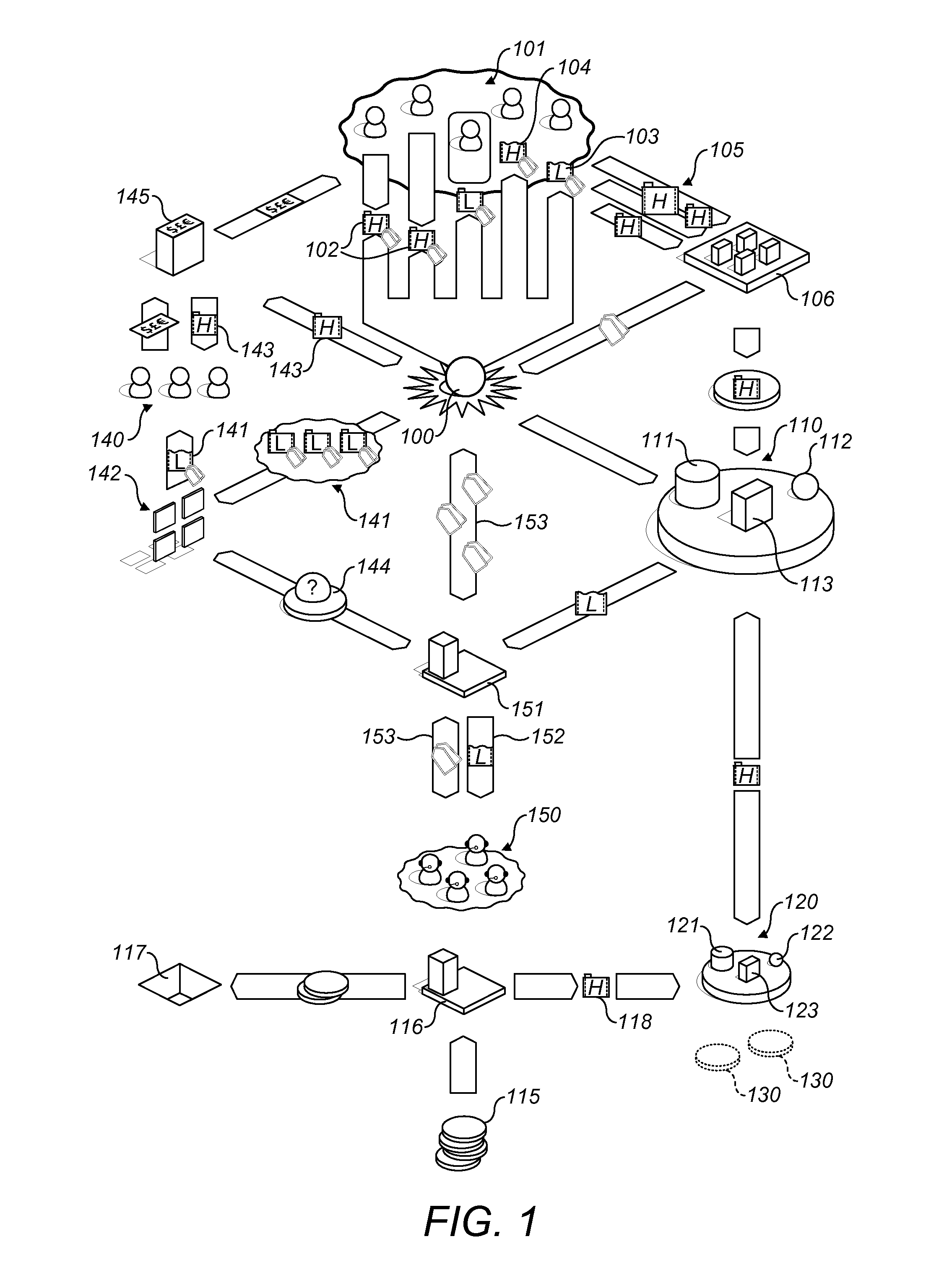Metadata tagging of moving and still image content
a technology of moving and still images and metadata, applied in the field of metadata tagging of moving and still image content, can solve the problems of threatening the future profitability of the creative industry, unable to access and realise the value of the hundreds of thousands of hours of archive content they have already created, and unable to cope with the current volume of data, etc., to achieve the effect of low cost, large quantity and extra revenu
- Summary
- Abstract
- Description
- Claims
- Application Information
AI Technical Summary
Benefits of technology
Problems solved by technology
Method used
Image
Examples
Embodiment Construction
[0143]FIG. 1 provides a schematic overview of a complete system according to the present invention. At the heart of the system is a Media Asset Management System (MAM) 100, which is in communication with the other component parts and provides for central control of all data and processes. A suitable MAM system is the Artesia system provided by Open Text. The interface and editing management may be based on MXF Server provided by Film Partners and the server management might be run by IBM Vmware.
[0144]In particular, the MAM is in communication with clients 101 from which it receives high resolution image content 102 and returns the content with synchronized metadata 102. Tagging with metadata is consistently indicated throughout the figures by a small meta-tag symbol appended to the tagged item. Three such tag symbols are shown appended to element 153 in FIG. 1. The high resolution image content may be downloaded 102. However, as indicated, the tagged content may be returned as low r...
PUM
 Login to View More
Login to View More Abstract
Description
Claims
Application Information
 Login to View More
Login to View More - R&D
- Intellectual Property
- Life Sciences
- Materials
- Tech Scout
- Unparalleled Data Quality
- Higher Quality Content
- 60% Fewer Hallucinations
Browse by: Latest US Patents, China's latest patents, Technical Efficacy Thesaurus, Application Domain, Technology Topic, Popular Technical Reports.
© 2025 PatSnap. All rights reserved.Legal|Privacy policy|Modern Slavery Act Transparency Statement|Sitemap|About US| Contact US: help@patsnap.com



